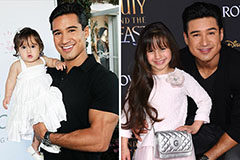Captivate the Jury: Essential Components of a Powerful Test Discussion
In the world of lawful advocacy, the capability to astound a jury is extremely important to the result of a trial (trial presentation). Crucial components such as understanding the audience, crafting a compelling narrative, and grasping verbal and non-verbal interaction are vital components of an effective presentation. The calculated use of aesthetic aids can dramatically improve understanding and retention of crucial arguments. As these variables intertwine, they create a cohesive strategy that not just informs yet likewise involves jurors on several levels. What certain techniques can truly change a typical presentation into a remarkable experience for the jury?

Understanding Your Audience
Comprehending your audience is a critical element of efficient test discussion. An effective discussion depends upon the ability to understand the demographics, values, and proneness of jurors. This understanding notifies just how disagreements are mounted, proof is provided, and sob stories are crafted, making certain that the message reverberates with the jurors on a personal level.
Research study suggests that jurors originated from varied histories and might have differing degrees of comprehending pertaining to legal procedures (trial presentation). Therefore, it is critical to avoid legal jargon that might estrange or confuse them. Instead, utilizing clear, relatable language promotes involvement and comprehension. In addition, comprehending the jurors' possible biases and life experiences allows the trial presenter to expect arguments and address problems proactively.
Reliable test discussion likewise entails observing jurors' reactions during the process. Involving with jurors as individuals instead than a collective unit is necessary in fostering a solid connection in the courtroom.

Crafting an Engaging Narrative
Crafting a compelling narrative is vital in assisting jurors with the intricacies of a situation. A well-structured story not only simplifies detailed lawful concepts but also engages jurors on an emotional level, making the information more relatable and unforgettable.
To achieve this, lawyers should begin by identifying the core message they want to convey. This message must resonate with the jurors' worths and experiences, fostering a connection that goes beyond mere realities. The narrative must unravel rationally, presenting events in a clear series to avoid complication. This chronological technique can aid jurors comply with the development of events, stressing cause and result.
Including human components-- such as personal stories or narratives-- can better improve the story's influence. These elements evoke empathy, enabling jurors to envision the consequences of the situation on realities. In addition, using a consistent theme throughout the presentation strengthens the primary debate, making it simpler for jurors to keep essential points.
Eventually, an engaging story transforms a trial presentation from a simple address of realities right into a convincing tale that captivates the jury, motivating them to mull over with both reason and emotion.
Using Aesthetic Aids
Incorporating aesthetic help into a trial presentation can significantly boost jurors' understanding and retention of details. Visual materials such as graphes, diagrams, photographs, and videos can transform complex legal principles and evidence into easily digestible formats. By engaging several detects, these aids enable jurors to picture the situation's essential aspects, making it less complicated for them to adhere to along and realize detailed information.
In addition, properly designed aesthetic help can highlight crucial points and highlight relationships between different pieces of proof. For example, timelines can effectively highlight the sequence of occasions, while annotated images can make clear particular information appropriate to the case. This not just aids in understanding but likewise reinforces the story presented by the lawyer.
It is essential, nevertheless, to guarantee that visual help are relevant, clear, and skillfully presented. Excessively intricate or messy visuals may bewilder jurors and detract from the message. When used judiciously, visual help serve to complement the oral disagreements and boost the total influence of the trial discussion. Eventually, effective visual continue reading this communication can be an effective device in persuading jurors and assisting them get to educated conclusions.
Mastering Verbal Communication
Efficient spoken interaction is important in a test discussion, as it offers as the primary means with which attorneys share their debates and link with jurors. Grasping this ability entails clarity, persuasion, and interaction. Attorneys need to express their factors clearly and concisely, preventing lawful lingo that might puzzle jurors. Simplicity in language cultivates understanding and helps jurors comprehend complicated concerns offered during the trial.
Furthermore, tone and pacing considerably effect exactly how messages are received. A certain tone shares authority, while ideal pacing allows jurors to take in information without really feeling bewildered. Attorneys should additionally vary their vocal inflections to stress bottom lines and maintain jurors' passion throughout the presentation.
In addition, the company of verbal arguments is crucial. Structuring the narrative realistically and coherently aids jurors adhere to the attorney's logic, making it less complicated for them to maintain vital information. Making use of convincing techniques, such as storytelling, can additionally improve the psychological vibration of the arguments offered, thus producing a much more profound connection with jurors.
Ultimately, understanding spoken communication not only reinforces an attorney's case yet likewise fosters trust fund and rapport with the court, dramatically boosting the possibilities of a favorable decision.

Engaging With Body Movement
Nonverbal communication plays an essential duty in trial discussions, typically conveying messages that words alone can not share. Body language, incorporating gestures, stance, faces, and eye contact, significantly affects exactly how jurors regard the credibility and genuineness of the presenter. A certain position, with shoulders back and an open pose, can instill trust, while closed-off body movement may suggest defensiveness or unpredictability.

Facial expressions need to mirror the feelings related to the case, enhancing the story existing. An honest expression throughout a touching moment can generate empathy and enhance the psychological appeal. Inevitably, mastering body movement is crucial for effective trial discussions, as it enhances spoken interaction and establishes a compelling visibility that reverberates with the jury.
Final Thought
Finally, captivating the court demands a tactical strategy that encompasses recognizing the target market, crafting a compelling story, making use of visual help, mastering verbal interaction, and engaging via body language. try this Each component plays a vital duty in creating a powerful test presentation that resonates with jurors on both psychological and intellectual degrees (trial presentation). By integrating these parts successfully, attorneys can considerably enhance their capacity to encourage and affect court decision-making
 Taran Noah Smith Then & Now!
Taran Noah Smith Then & Now! Jason J. Richter Then & Now!
Jason J. Richter Then & Now! Christina Ricci Then & Now!
Christina Ricci Then & Now! Gia Lopez Then & Now!
Gia Lopez Then & Now! Shannon Elizabeth Then & Now!
Shannon Elizabeth Then & Now!